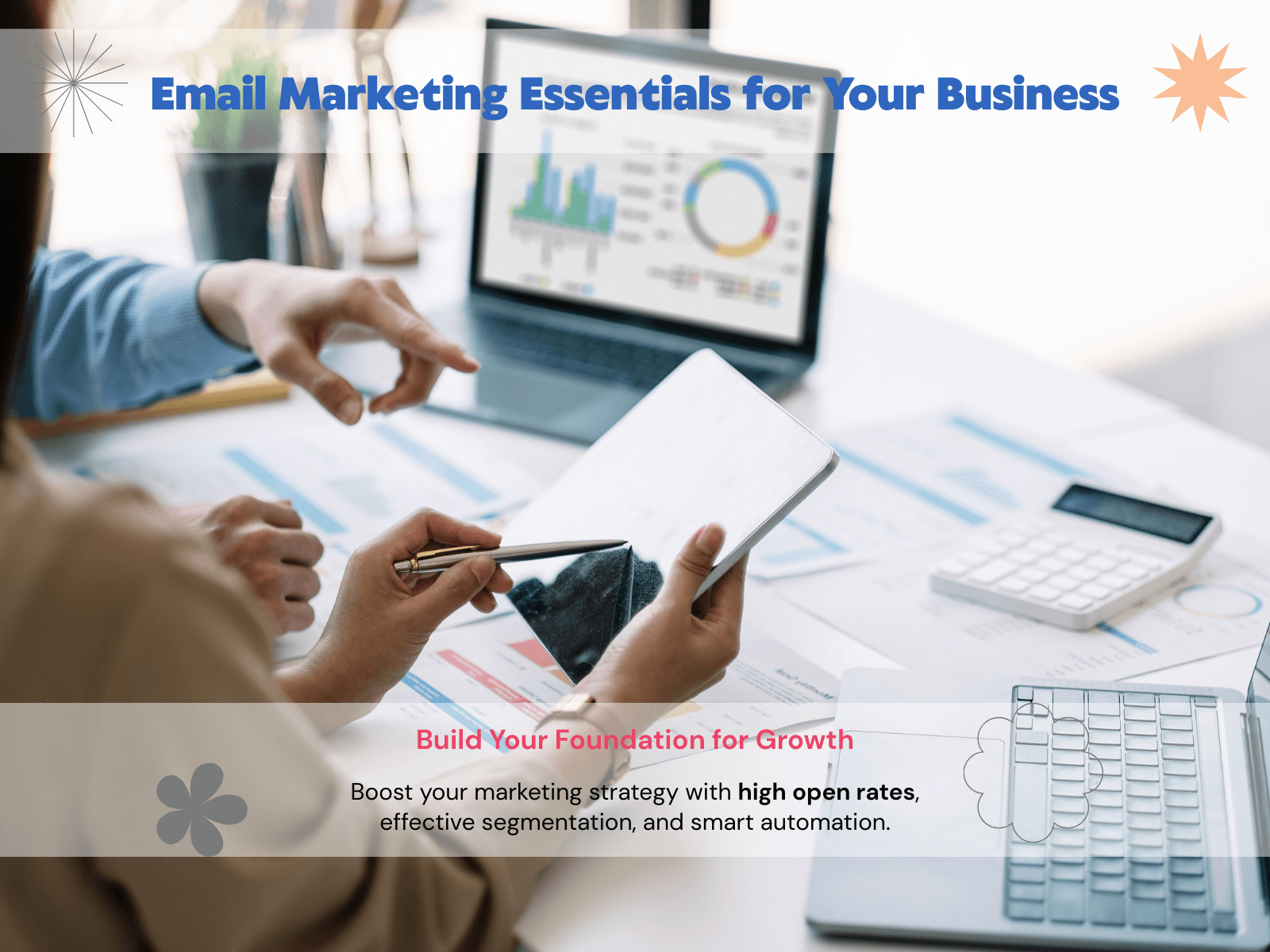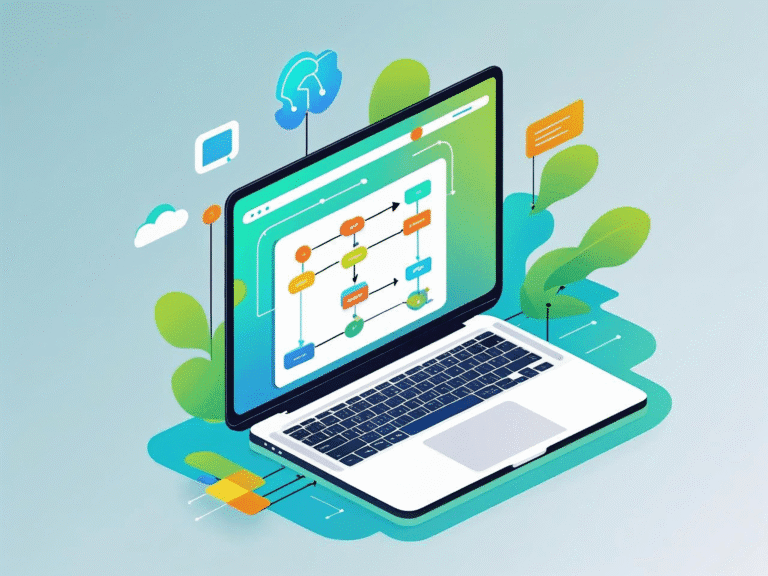In a world overflowing with digital noise, email marketing remains a rare constant—direct, personal, and powerful. Whether you’re a solopreneur, startup founder, or marketing professional, establishing a robust email marketing strategy is one of the smartest investments you can make. But success doesn’t come from blasting out emails and hoping for clicks. It starts with building a rock-solid foundation.
In this in-depth guide, we’ll walk through everything you need to master the essentials of email marketing in 2025 and beyond—covering principles, platforms, list-building tactics, automation, content strategy, analytics, and real-world use cases. Let’s get started.
1. Why Email Marketing Still Matters in 2025
Despite the rise of AI, social media, and instant messaging, email continues to be one of the most effective digital marketing tools available. Here’s why:
- High ROI: According to Litmus, email marketing delivers a return of $36 for every $1 spent.
- Owned Audience: Unlike social media platforms, you own your email list—no algorithms or gatekeepers.
- Hyper-personalization: Email allows personalized, segmented communication at scale.
- Automation Friendly: Today’s tools let you automate entire email journeys, saving time and increasing impact.
Case Study:
Morning Brew, a popular business newsletter, grew from 0 to 4 million subscribers largely through email marketing. Their highly targeted, witty, and well-structured emails became a daily habit for readers.
2. Core Principles of a Successful Email Marketing Strategy
Before diving into platforms and tactics, let’s lock down the foundational principles:
a. Value First, Always
Nobody wants spam. Every email must deliver value—educational, entertaining, or exclusive.
b. Consistency Over Volume
Quality > Quantity. A consistent publishing schedule builds trust and engagement.
c. Permission-Based Marketing
Only send emails to people who have opted in. This ensures compliance with laws like GDPR, CAN-SPAM, and maintains your sender reputation.
d. Segmentation and Personalization
Treat your subscribers like individuals. Segment your audience by behavior, demographics, or purchase history to send relevant content.
3. Setting Up Your Email Marketing Infrastructure
To run a successful campaign, you need the right tools and setup.
a. Choosing the Right Email Marketing Platform
Your platform is your command center. Here are popular platforms and their use cases:
| Platform | Best For | Features |
| Mailchimp | Beginners, small businesses | Drag-and-drop builder, basic automation |
| ConvertKit | Creators, bloggers | Sequences, tagging, visual automation builder |
| ActiveCampaign | Ecommerce and SaaS | Advanced automation, CRM |
| Klaviyo | Ecommerce | Shopify integration, product feeds |
| Brevo (ex-Sendinblue) | SMBs in EU-friendly zones | Email + SMS, marketing automation |
Pro Tip: Choose a platform that aligns with your current and future needs. Switching later can be a technical headache.
b. Setting Up a Professional Email Domain
Using yourname@gmail.com for marketing emails screams unprofessional. Instead:
- Buy a domain (e.g., yourbrand.com)
- Set up a domain email (e.g., hello@yourbrand.com)
- Configure SPF, DKIM, and DMARC records for better deliverability
c. Compliance and Deliverability Basics
Ensure you comply with:
- GDPR (EU): Explicit consent required, right to access and delete data
- CAN-SPAM (US): Clear unsubscribe link, accurate “From” name
- CASL (Canada): Clear consent and opt-in logging
4. Building and Growing Your Email List
The size of your list matters, but quality matters more.
a. Lead Magnets That Work
Offer something irresistible in exchange for an email. Examples:
- Free ebook or guide
- Exclusive webinar
- Discount code
- Free course or email challenge
- Templates or checklists
Example: HubSpot offers free marketing templates in exchange for emails, generating hundreds of thousands of leads monthly.
b. High-Converting Signup Forms
Best practices:
- Use pop-ups, slide-ins, and embedded forms
- Ask for minimal info (usually just email + first name)
- Write compelling headlines (e.g., “Get Our Best Growth Hacks Every Monday”)
- A/B test your forms continuously
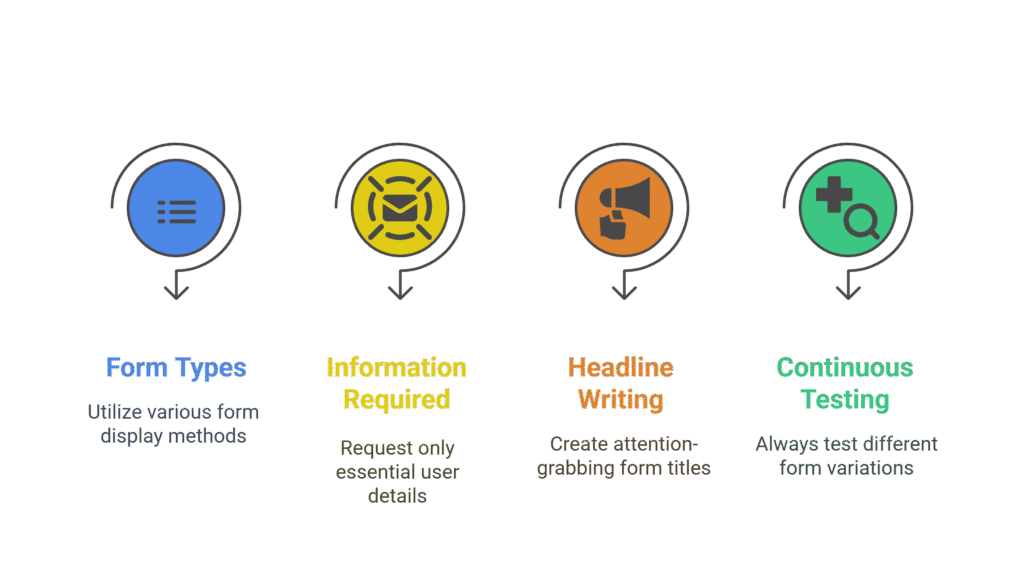
c. Landing Pages and Opt-In Funnels
Create dedicated landing pages for each offer or campaign. Use tools like:
- Carrd (for quick, simple pages)
- Unbounce, Leadpages, or Systeme.io (for more robust funnels)
- WordPress + Elementor (for full customization)
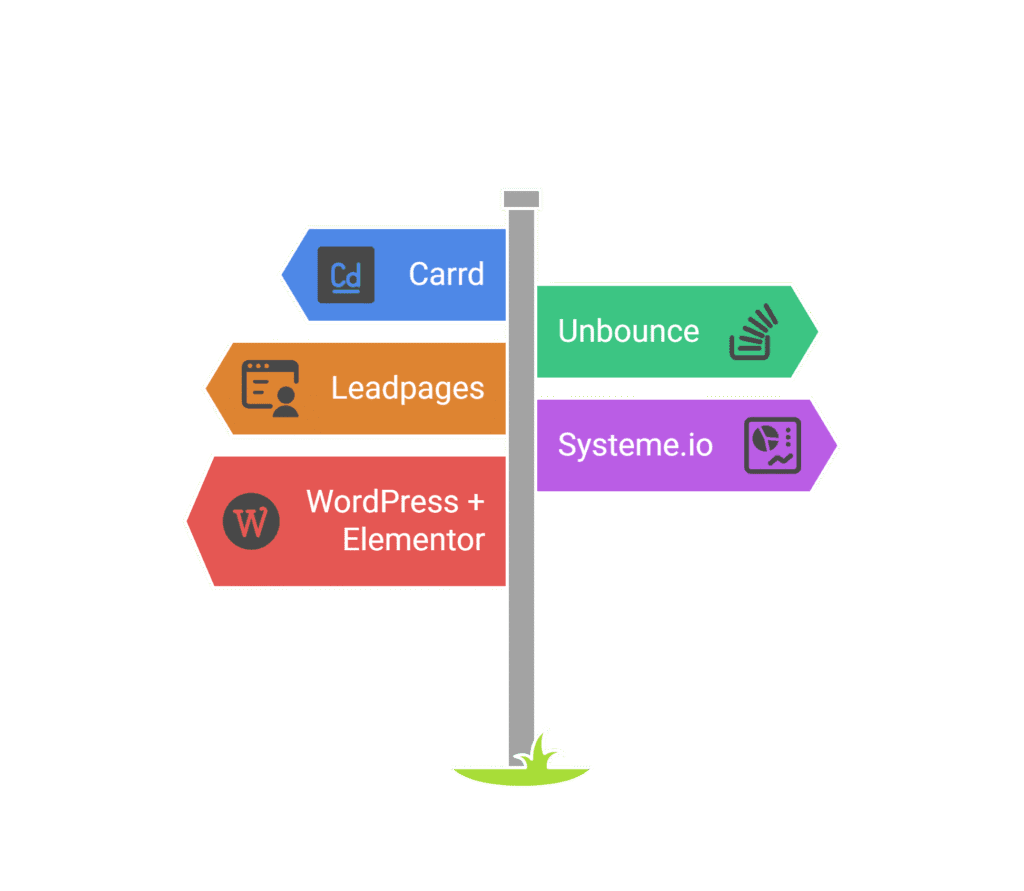
5. Crafting Engaging Emails That Convert
Once someone signs up, your job is just beginning. Here’s how to write emails that get read.
a. Subject Lines That Get Clicked
This is the gatekeeper. Make it punchy, relevant, and curiosity-inducing.
Examples:
- “We need to talk…”
- “Your free guide is inside”
- “3 tools that changed our business forever”
Avoid ALL CAPS and spammy phrases like “Buy now!!!”
b. Email Structure and Copywriting Tips
Follow the AIDA formula:
- Attention: Compelling headline
- Interest: A relatable story or shocking stat
- Desire: Benefits of your product/offer
- Action: A clear CTA (Call to Action)
Keep sentences short, use white space, and write like you’re talking to a friend.
c. Visuals, Layout, and Mobile Optimization
- Use simple, mobile-responsive designs
- Avoid heavy image-only emails (bad for deliverability)
- Make buttons big and tappable
- Use tools like Stripo, BEEFree, or Canva to design emails
6. Welcome Sequences and Automated Journeys
a. The Welcome Series
This is the most opened email sequence you’ll ever send. Suggested sequence:
- Welcome & Deliver Value (e.g., your freebie)
- Your Story (build trust and share your brand)
- Value Bomb (free tip, tool, or strategy)
- Soft Pitch (introduce product or service)
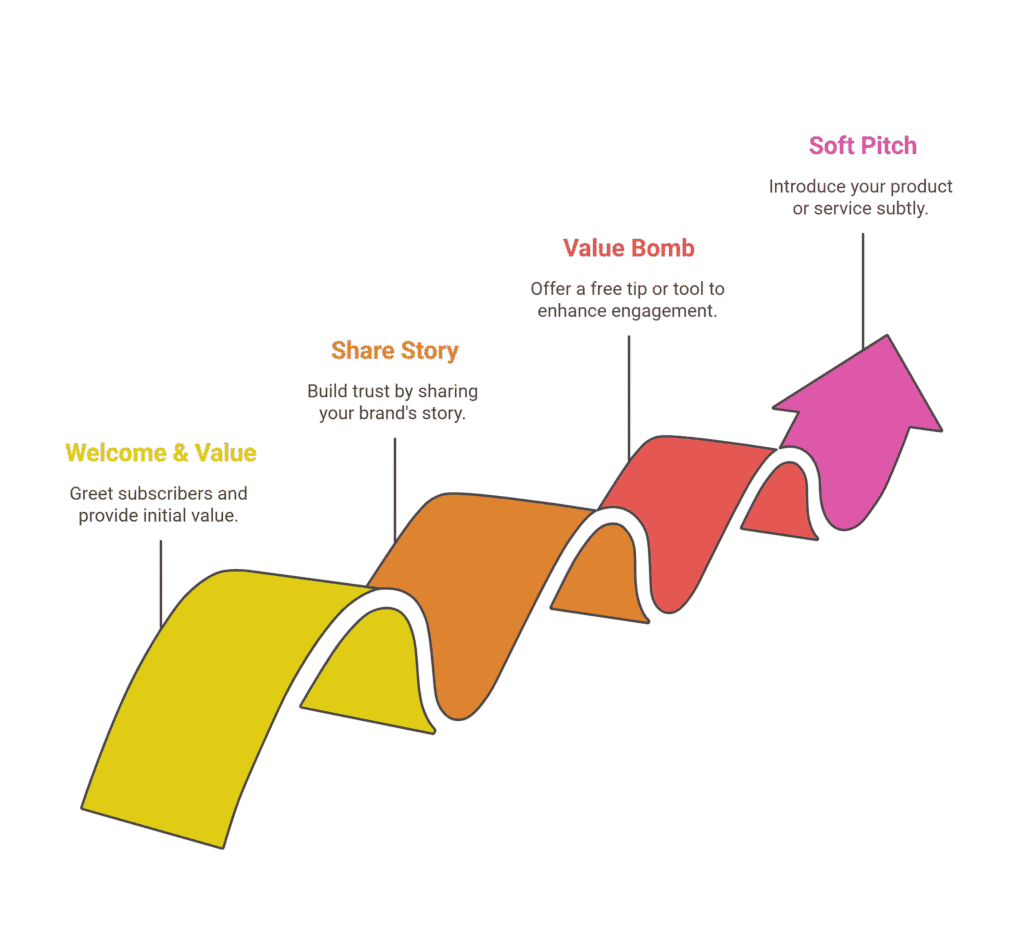
b. Behavior-Based Automation
Modern platforms let you trigger emails based on:
- Link clicks
- Product views
- Abandoned carts
- Webinar attendance
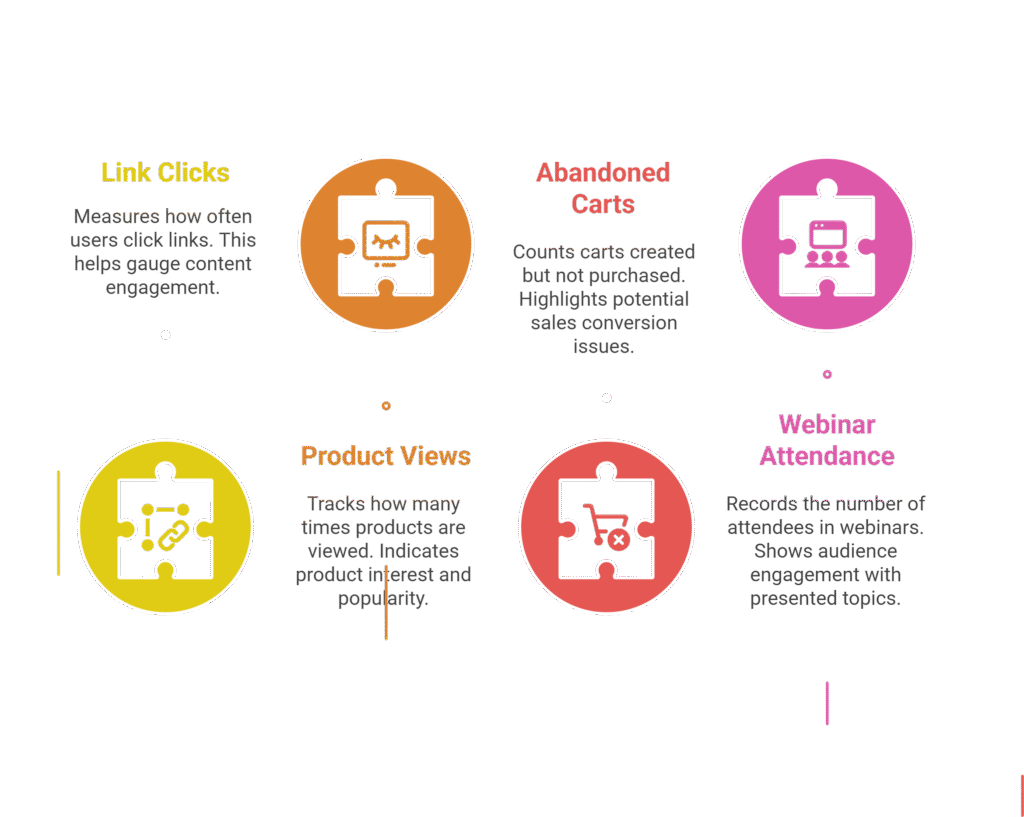
Example: If a subscriber clicks a link about “SEO,” tag them and send an SEO-specific email series.
7. Segmenting Your Audience for Maximum Relevance
Segmentation = higher open rates, CTR, and conversions.
Types of Segments:
- Demographic: Age, location, job title
- Behavioral: Website activity, email opens, purchase history
- Engagement: Active vs inactive subscribers
Advanced Tip: Use lead scoring to identify hot leads and tailor emails accordingly.
8. Measuring Success: Key Email Marketing Metrics
a. Core Metrics to Track
| Metric | What It Tells You |
| Open Rate | Subject line and brand strength |
| Click-Through Rate | Content and CTA effectiveness |
| Conversion Rate | Campaign ROI |
| Bounce Rate | Email list health |
| Unsubscribe Rate | Message relevance |
| Spam Complaints | Email reputation and targeting accuracy |
b. Benchmarks (2025 Averages)
- Open Rate: 25–35%
- CTR: 2–5%
- Unsubscribe: <0.3%
- Spam Complaints: <0.05%
Pro Tip: Always test and iterate. Run A/B tests on subject lines, layouts, CTAs, and timing.
9. Advanced Strategies for Scaling Your Email Campaigns
Once you’ve nailed the basics, here’s how to go further.
a. Email Drip Campaigns
Used for onboarding, course delivery, or nurturing leads.
Example: A 7-day email course on productivity with daily value bombs and a pitch at the end.
b. Product Launch Sequences
Jeff Walker’s Product Launch Formula made millions using email:
- Teaser Email
- Value Video 1
- Value Video 2
- Scarcity/Pitch Email
- Last Call
c. List Cleaning & Re-engagement
Remove inactive subscribers quarterly. Send a “We Miss You” campaign before deleting.
d. Integrate with CRM and Other Channels
Connect email with:
- Facebook custom audiences
- SMS marketing (via Klaviyo, Brevo)
- Sales CRM (HubSpot, ActiveCampaign)
10. Common Mistakes to Avoid
- Buying email lists – low engagement, high risk
- Sending without permission – spam complaints and legal issues
- Neglecting mobile – over 50% of emails are opened on mobile
- Over-emailing – leads to fatigue and unsubscribes
- No clear CTA – confusion kills conversions
11. Real-World Success Stories
a. Grammarly
Grammarly uses weekly update emails showing productivity stats, writing scores, and personalized suggestions. These emails are highly shareable and keep users engaged.
b. The Hustle (by HubSpot)
The Hustle newsletter became so popular through its casual tone, clean format, and consistency that HubSpot acquired it to enhance its content strategy.
c. Tushy (DTC ecommerce)
Tushy’s emails are quirky, funny, and on-brand. Their “poop-powered marketing” has turned an awkward product into a multi-million-dollar business.
Conclusion: Build the Foundation, Then Optimize Relentlessly
Email marketing isn’t dead—it’s evolving. With the right foundation, tools, and mindset, you can build lasting relationships and grow your business sustainably through email.
Key Takeaways:
- Focus on value and trust first.
- Grow your list with ethical, high-converting opt-ins.
- Write emails like a human, not a robot.
- Automate intelligently—but don’t forget the personal touch.
- Measure, tweak, and refine continuously.
If you’re just starting out, don’t get overwhelmed. Begin with one solid welcome sequence, build your list slowly, and always ask: “How can I better serve my audience today?” And the most important thing is to join our comprehensive course:
Email Marketing Mastery: Build, Grow & Automate Your Campaigns

